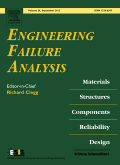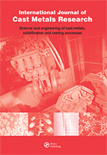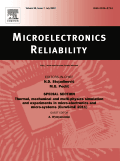
Engineering Failure Analysis
Scope & Guideline
Bridging Theory and Practice in Failure Analysis
Introduction
Aims and Scopes
- Failure Mechanisms in Materials and Structures:
The journal focuses on understanding the various failure mechanisms that materials and structures may experience, including fatigue, corrosion, stress corrosion cracking, and thermal degradation. - Predictive Modeling and Analysis:
It emphasizes the development of predictive models for assessing the lifespan and performance of engineering materials and structures under different loading and environmental conditions. - Case Studies and Experimental Investigations:
The publication includes case studies and experimental investigations that provide insights into real-world failures and the methodologies used to analyze them. - Advanced Testing and Characterization Techniques:
The journal discusses advanced testing methods and characterization techniques, such as finite element analysis (FEA), acoustic emission monitoring, and digital image correlation, to study failure behavior. - Interdisciplinary Approaches to Failure Analysis:
It promotes interdisciplinary research that combines insights from materials science, mechanical engineering, structural engineering, and other fields to address complex failure issues.
Trending and Emerging
- Artificial Intelligence and Machine Learning Applications:
There is a growing trend in applying AI and machine learning techniques for predictive maintenance, fault diagnosis, and failure prediction, showcasing the intersection of computational intelligence and engineering. - Sustainable Engineering Practices:
An increasing number of papers focus on failure analysis in the context of sustainability, including the performance of materials in environmentally challenging conditions and the development of eco-friendly materials. - Advanced Composite Materials:
Research on the failure mechanisms of advanced composite materials is on the rise, particularly in applications related to aerospace and automotive engineering, reflecting the industry's shift towards lightweight and high-performance materials. - Innovative Corrosion Mitigation Strategies:
Emerging studies are focusing on innovative corrosion mitigation techniques, particularly in harsh environments, such as those found in marine and industrial applications. - Digital Twin and Simulation Technologies:
The use of digital twin technologies and advanced simulation methods for predicting failure and optimizing designs has gained traction, indicating a shift towards more integrated and data-driven approaches in engineering.
Declining or Waning
- Simplistic Failure Analysis Methods:
There has been a noticeable decline in the publication of papers relying solely on simplistic or traditional failure analysis methods without incorporating advanced modeling or experimental techniques. - Generalized Corrosion Studies:
Studies that do not focus on specific environments or material systems, but rather provide generalized insights into corrosion mechanisms, seem to be less frequent, as researchers are now focusing on more specific applications and conditions. - Basic Mechanical Testing:
The emphasis on basic mechanical testing methods without integration of advanced diagnostics or predictive modeling has decreased, reflecting a trend towards more sophisticated analysis techniques. - Historical Case Studies:
The frequency of historical case studies that do not contribute significantly to current engineering practices or technologies appears to be waning, as the journal seeks to publish more innovative and applicable research. - Low-Impact Engineering Failures:
Research focusing on low-impact engineering failures that do not contribute to significant safety concerns or technical advancements is becoming less prevalent.
Similar Journals

Journal of Structural Fire Engineering
Transforming knowledge into fire safety practices.The Journal of Structural Fire Engineering is a premier academic publication dedicated to advancing the field of fire safety and structural engineering. Published by Emerald Group Publishing Ltd, this journal features high-quality research and innovative solutions addressing crucial aspects of safety, risk, reliability, and the mechanics of materials. With an impact factor that reflects its growing influence in the academic community and a classification in the Q3 quartile across several engineering categories, the journal plays a vital role in disseminating knowledge that bridges theoretical concepts and practical applications. With coverage spanning from 2010 to 2024, researchers, professionals, and students can access a wealth of studies that explore the intersection of structural integrity and fire safety. While it currently operates under a subscription model, the journal remains committed to sharing pivotal insights that drive forward the discipline. Join the community of experts striving to enhance engineering practices and resilience against fire-related hazards.

FATIGUE & FRACTURE OF ENGINEERING MATERIALS & STRUCTURES
Transforming Understanding of Material PerformanceFATIGUE & FRACTURE OF ENGINEERING MATERIALS & STRUCTURES, published by WILEY, is a leading journal in the domains of materials science and mechanical engineering, with a solid reputation for advancing research on the behavior of materials under fatigue and fracture conditions. With an impressive impact factor and ranking in the top quartiles of its categories in 2023, this journal serves as a vital resource for academics, professionals, and students interested in the intricate mechanics of materials. The journal encompasses a comprehensive scope, covering both experimental and theoretical methodologies designed to understand and predict material performance under various loading conditions. As the journal continues to thrive since its inception in 1979 and is set to converge until 2024, it remains an essential platform for disseminating innovative and crucial findings in this specialized field. Researchers are invited to explore the wealth of knowledge presented within its pages, paving the way for enhanced engineering practices and material design.

INTERNATIONAL JOURNAL OF CAST METALS RESEARCH
Elevating Standards in Metals and Alloys ResearchInternational Journal of Cast Metals Research, published by Taylor & Francis Ltd, serves as a premier platform for the dissemination of cutting-edge research in the fields of Mechanical Engineering, Mechanics of Materials, and Metals and Alloys. With a commitment to advancing the understanding of cast metals, this peer-reviewed journal has achieved notable recognition, featuring a 2023 Q2 ranking in its respective categories and ranking 71st in the Materials Science field according to Scopus. Researchers and professionals will find a wealth of valuable insights through rigorous studies and innovative findings, reflecting the journal's goal of facilitating knowledge transfer and addressing contemporary challenges in material science. Furthermore, its accessible publication years from 1996 to 2024 ensure that it not only captures the evolution of technology in cast metals but also stands at the forefront of future developments. Ideal for academics and practitioners alike, the journal aims to foster collaboration and inspire new developments within the discipline.

ROCK MECHANICS AND ROCK ENGINEERING
Connecting Geology and Engineering for a Sustainable FutureROCK MECHANICS AND ROCK ENGINEERING, published by SPRINGER WIEN, stands as a premier journal in the fields of civil and structural engineering, geology, and geotechnical engineering. Since its inception in 1983, this journal has evolved into a leading platform for the dissemination of high-quality research, underscored by its impressive Q1 quartile rankings in multiple relevant categories as of 2023. With a significant impact factor and a ranking of 8th out of 321 in Earth and Planetary Sciences (Geology), the journal attracts scholars and practitioners aiming to contribute to and stay abreast of advancements in rock mechanics and engineering practices. While it does not offer Open Access options, its comprehensive and rigorous peer-reviewed articles serve as essential resources for fostering knowledge and innovation in the sector. The commitment to exploring the interactions between geological materials and engineering applications makes this journal indispensable for researchers, professionals, and students dedicated to pushing the boundaries of these critical fields.

Journal of Failure Analysis and Prevention
Empowering Engineers with Insightful AnalysesJournal of Failure Analysis and Prevention, published by SpringerNature, stands as a vital resource in the fields of Materials Science, Mechanical Engineering, and Safety, Risk, Reliability and Quality. With an ISSN of 1547-7029 and an E-ISSN of 1864-1245, this journal has been dedicated to advancing the understanding of failure mechanisms and prevention strategies since its inception in 2001. Its convergence of rigorous research from various domains underscores its importance, achieving a Q3 classification across multiple engineering categories as of 2023. As of the latest rankings, it holds significant positions, including #114 in Safety, Risk, Reliability and Quality and #408 in Mechanical Engineering, illustrating its role in fostering scholarly dialogue and innovation. Although it does not currently offer open-access options, the journal endeavors to be accessible for researchers and professionals seeking impactful, high-quality analyses that inform both safety practices and engineering improvements. Whether you are a researcher pushing the boundaries of knowledge or a professional applying these principles, the Journal of Failure Analysis and Prevention is an indispensable part of your academic toolkit.

Bridge Structures
Transforming Engineering Challenges into Bridge SuccessesBridge Structures is an esteemed academic journal dedicated to the field of structural engineering, particularly focusing on the design, analysis, and maintenance of bridge systems. Published by IOS PRESS, a reputable publisher known for its contributions to various scientific fields, the journal serves as an integral platform for disseminating innovative research and advancements within the domain. With an ISSN of 1573-2487 and an E-ISSN of 1744-8999, Bridge Structures has established itself over the years—covering contributions from 2005 to 2024. The journal has attained a commendable ranking within the Q3 category in Building and Construction and holds a position within the 28th percentile among its peers according to the Scopus rankings. Though the journal operates on a subscription basis, its commitment to advancing engineering knowledge is paramount, making it essential reading for researchers, practitioners, and students eager to deepen their understanding of bridge engineering. The journal not only explores theoretical advancements but also emphasizes practical applications, providing a well-rounded perspective on current challenges and solutions in the field of bridge structures.

STRENGTH OF MATERIALS
Innovating insights into the resilience of materials.STRENGTH OF MATERIALS is a prestigious journal published by SPRINGER that focuses on the critical field of mechanics of materials, providing an authoritative platform for the dissemination of research and developments in material strength analysis since 1969. With an ISSN of 0039-2316 and an E-ISSN of 1573-9325, this journal serves a global audience of researchers, professionals, and students, contributing essential insights into the physical properties and performance characteristics of various materials under stress and strain. As part of the United States' academic literature, it showcases work that not only advances theoretical knowledge but also applies to practical engineering scenarios. Although ranked in the Q4 tier with respect to its category in Mechanics of Materials, with a Scopus rank of #319 out of 398 (19th percentile), it remains an important resource for those looking to expand their understanding in this specialized area. Researchers can access a wealth of information through this journal, fostering continued innovation and interdisciplinary collaboration.

MICROELECTRONICS RELIABILITY
Advancing the Future of Microelectronics ReliabilityMICROELECTRONICS RELIABILITY, published by PERGAMON-ELSEVIER SCIENCE LTD, is a pivotal journal that serves the advancing field of microelectronics and materials reliability. With its ISSN 0026-2714 and E-ISSN 1872-941X, this journal has been at the forefront of disseminating research since its inception in 1962 and is set to continue exploring cutting-edge topics through 2024. The journal holds a respectable presence across several categories, achieving a Q3 ranking in areas such as Atomic and Molecular Physics and Electrical and Electronic Engineering, highlighting its broad interdisciplinary appeal, while also ranking in the Q2 category for Safety, Risk, Reliability, and Quality, which speaks to its commitment to ensuring standards in technological advancements. Access to this journal is subscription-based, making it an essential resource for researchers, professionals, and students seeking reliable information and data regarding electronic material performance and reliability assessment. Located in Kidlington, Oxford, UK, MICROELECTRONICS RELIABILITY is dedicated to advancing the field and addressing the critical issues associated with the reliability of microelectronic devices, thereby supporting innovations that shape our technological future.

CORROSION ENGINEERING SCIENCE AND TECHNOLOGY
Transforming materials science through corrosion insights.CORROSION ENGINEERING SCIENCE AND TECHNOLOGY is a pivotal journal dedicated to the exploration and advancement of corrosion knowledge and technologies, published by SAGE Publications Inc. This esteemed journal holds an ISSN of 1478-422X and an E-ISSN of 1743-2782, and is available for access in the United Kingdom and beyond. With a converged timeline from 2003 to 2024, it continues to publish high-quality research, fostering innovation in the fields of Chemical Engineering, Chemistry, and Materials Science, currently ranked in the Q3 quartile in these categories as of 2023. Additionally, the journal's Scopus rankings—211th in General Chemistry, 145th in General Chemical Engineering, and 266th in General Materials Science—underscore its commitment to disseminating impactful research. As an open-access journal, it invites researchers, professionals, and students to engage with cutting-edge developments in corrosion science, offering insights and solutions critical to numerous industries and enhancing collective academic understanding.

JOURNAL OF PRESSURE VESSEL TECHNOLOGY-TRANSACTIONS OF THE ASME
Connecting Theory and Practice in Pressure Vessel DesignThe JOURNAL OF PRESSURE VESSEL TECHNOLOGY-TRANSACTIONS OF THE ASME, published by the esteemed American Society of Mechanical Engineers (ASME), is a pivotal resource in the fields of Mechanical Engineering, Mechanics of Materials, and Safety, Risk, Reliability, and Quality. With an established track record since 1974, this journal presents high-quality, peer-reviewed research that addresses the latest innovations, theoretical advancements, and practical applications related to pressure vessel technology. Although it does not offer open access, its rigorous publication standards ensure that the articles presented are invaluable to researchers, engineers, and professionals striving for excellence in their fields. As indicated by the 2023 Scopus rankings, the journal holds a respectable position within its quartile ranking (Q3), underscoring its relevance and contribution to advancing knowledge in these critical areas of engineering. The journal continues to serve as a crucial platform for disseminating cutting-edge research, facilitating academic discourse, and supporting the growth of knowledge in pressure vessel technology through its collaborative and multidisciplinary approach.